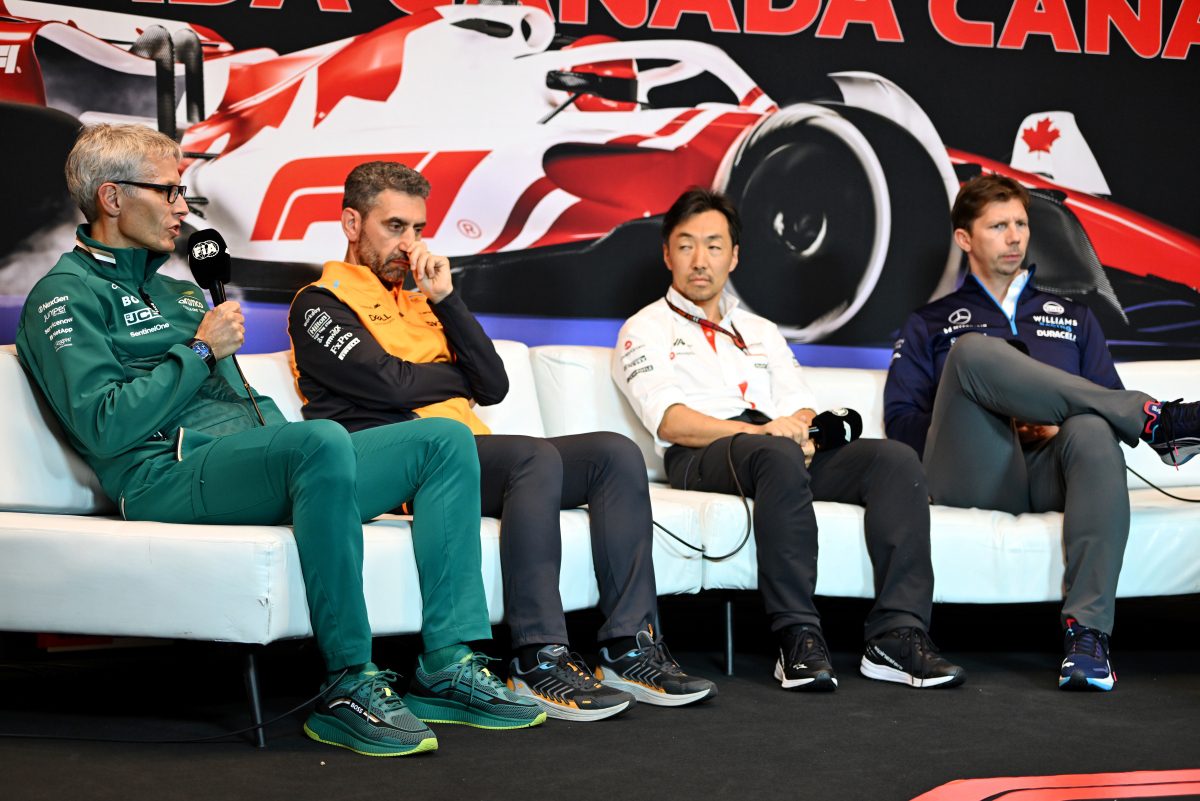Several Formula 1 team bosses have expressed concern over whether the draft 2026 technical regulations in their current state would deliver the outlined ambitions.
This story is powered by Motorsport Week – for more reports from the world of motorsport, click here.
The FIA has released an initial proposal behind the next rules overhaul with an expected planned move to lighter, smaller cars to improve the overall racing spectacle.
The 2026 machines will target a 30kg weight reduction to 768kg, while the width will be cut from 2000mm to 1900m and the wheelbase will drop 200mm to 3400mm.
Meanwhile, the FIA has revealed that active aero will be used as a means to even out the shift towards the engines having an increased reliance on the electrical side.
But while McLaren boss Andrea Stella agrees with the headline aims the sport is aspiring towards, he believes changes are required to how those plan to be obtained.
“We are in agreement and we support the intent and the objectives at eye level that were stated in the press release,” Stella said.
“However, if we look at the regulations in the draft form that has been circulated, they are still far from being able to achieve those agreeable objectives and intent.
“So it is the time for the FIA, F1, and the teams to work together, listen to one another, and contribute to form a solution that will allow the sport to meet those objectives.
“I think if we meet those objectives, we’re going to have Formula 1 in good shape.
“But we need to make sure that when it’s the time of implementation, we actually deliver a product that meets those targets and objectives.”
Expanding upon his issues, Stella argued the increased electrical output from the new power units would put too much strain on the aero and chassis to compensate.
“I think the main gaps are in Article 3, which is the aerodynamic regulations,” he explained when asked which targets he thinks will be hard to acquire as it stands.
“And the second one is I still think that the way in which the power units are planned to be used needs to be adjusted.
“We can still achieve a 50-50 concept, which is a nice concept, but it can be achieved in a way that doesn’t put so much of a requirement on the chassis side, which is difficult to meet.
“So I think from a power unit point of view, likewise from a chassis point of view, it’s time that all parties understand that they need to contribute to the success of the sport.”
However, Stella has cautioned that the 2026 cars run under the FIA’s current arrangement would be too quick down the straights while also being too slow in the turns.
“The cars are not fast enough in the corners and too fast in the straights,” he added. “So these two aspects need to be rebalanced.”
Elsewhere, Williams team boss James Vowles concurred with Fernando Alonso that the complex power units will make it hard to reach the planned weight reduction.
“I think the bit I would add to it is there’s probably two different carves out of concerns at the moment,” Vowles began.
“First and foremost, there’s the aerodynamic side, so what we’re doing with either freedom or physically how fast the cars will be.
“And then the second side of it is where we are on weight.
“And I’ve been vocal already a few weekends ago that I put it from William’s perspective, but I don’t think anyone will hit that weight target particularly.
“It’s going to be incredibly difficult, and I think that needs reviewing because there’s someone that spends their life going through marginal gains taking weight out of a car.
“On the second side of things, I would absolutely agree with my peers here that it is in a position where if we work together, and we will do going forward on this one, we can get it to a really good position, I think. It’s a solid foundation to work from, but we do need to clear up some aspects of it.”
Aston Martin’s Mike Krack concurred that tweaks must be made before the rules are ratified, but stressed that those discussions should occur behind closed doors.
“I think we are quite far away still from the final one, and I think it’s now up to all stakeholders to discuss, to work on possible issues constructively rather than using the media to try and put something forward,” he urged. “So I think over the next weeks and months on TAC level, I think we will be able to iron out all the issues that are still there.”













